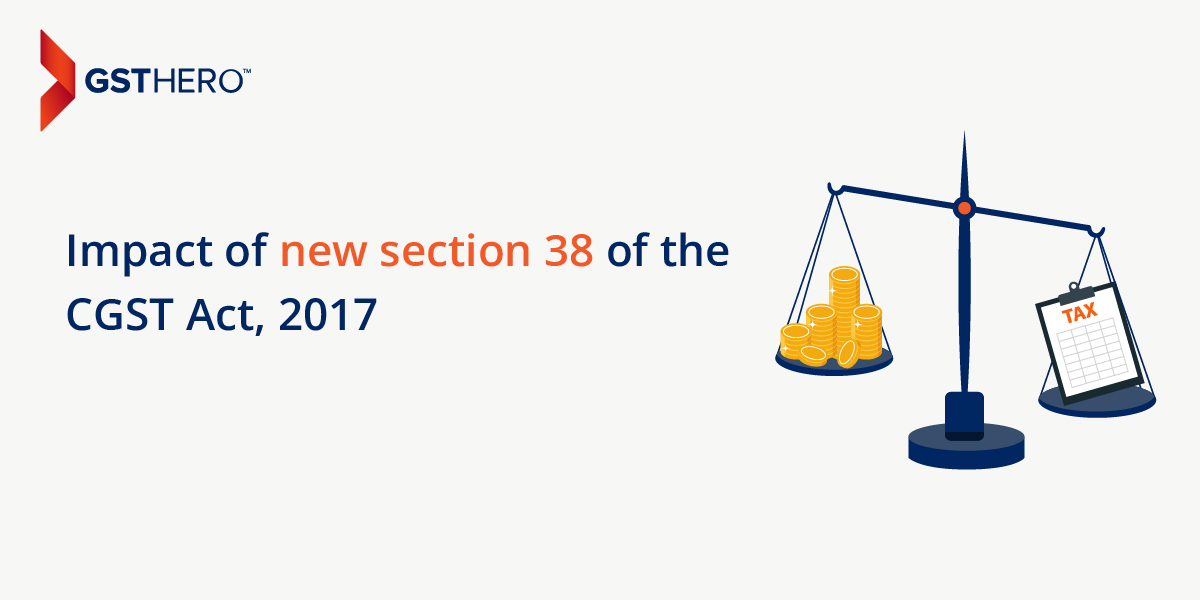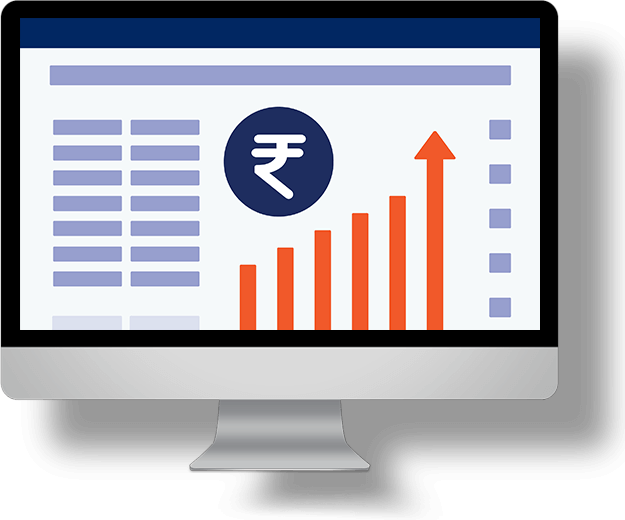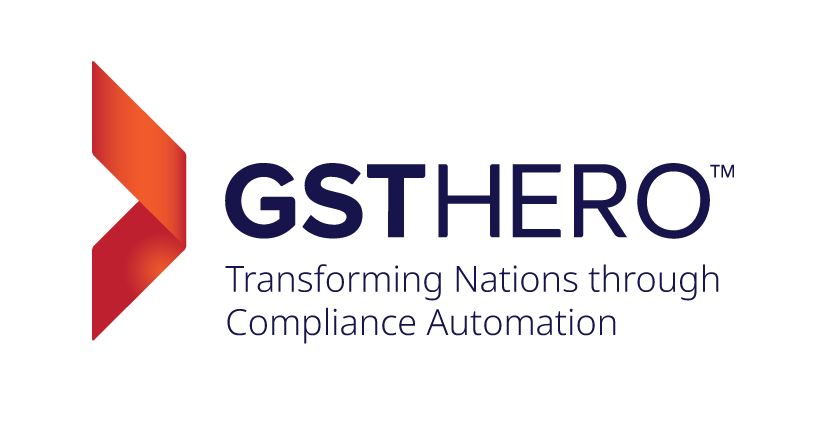The Finance Minister of India, Shrimati Nirmala Sitharaman, presented the Finance Bill 2022 on 1st February 2022. The Finance Bill 2022 got presidential assent on 30th March 2022, accordingly, converting the same into the Finance Act, 2022. We will broadly discussed on How does the existing Section 38 govern GST Input Tax Credit claims?
The various sections in the Finance Act, 2022 will be effective in the following manner –
Sections of the Finance Act, 2022 | Effective date |
|---|---|
Section 2 to section 85 | 1st April 2022 |
Section 100 to section 114 | The effective date will be notified by the Central Government by way of notification |
Section 104 of the Finance Act, 2022 deals with the newly substituted section 38 of the Central Goods and Services Tax Act, 2017 which is currently creating a hue and cry in the trade and industry.
In the present article we will first go through the existing provisions and then step by step understand the newly substituted provisions of section 38 of the Central Goods and Services Tax Act, 2017 along with an example.
How does the existing Section 38 govern GST Input Tax Credit claims?
Existing provisions of section 38 of the Central Goods and Services Tax Act, 2017 are based on two way communication process. The process says as under –
- The seller furnishes the details of outward supplies under section 37(1);
- The buyer can accept/ modify/ delete such supplies in inward supplies return (i.e., Form GSTR-2);
- The same is communicated back to the supplier;
It is important to note here that the Form GSTR-2 is never introduced and is currently suspended.
Revised section 38 under GST Input Tax Credit Claims
The new section 38 of the Central Goods and Services Tax Act, 2017 is broadly divided into two sub-sections. The gist of both the sub-sections is explained hereunder –
- Section 38 sub-section (1) simply states that the details of outward supplies as furnished by the taxable supplier will be communicated to the recipient via auto-generated statement (i.e., Form GSTR2B); and
- Section 38 sub-section (2) such auto-generated statement (i.e., Form GSTR-2B) will cover –
- The details of inward supplies relating to which the ITC is available to the recipient (i.e., eligible input tax credit); and
- The details of supplies relating to which the ITC is not available, wholly or partly, to the recipient (i.e., ineligible input tax credit).
The new provisions of section 38 of the CGST Act, 2017 can be simplified by the following flowchart –

Get Free Bonus Report: Claim 100% ITC for your business
Now, let us understand why the new section 38 of the Central Goods and Services Tax Act, 2017 has created a loud hue and cry in the trade and industry. Sub-section (2) of Section 38 lists down six clauses covering various situations for an ineligible ITC.
Situations, resulting into an ineligible input tax credit under GST, as per section 38(2) is highlighted hereunder –
- Supplier is newly registered (time limit will be prescribed) under GST;
- The supplier has defaulted in payment of tax and such default continues for the time limit as will be prescribed;
- Supplier’s output tax payable, as per Form GSTR-1 filed by him, exceeds output tax paid via Form GSTR-3B by a specific prescribed limit;
- Supplier avails ITC in Form GSTR-3B more than ITC reflected in its Form GSTR-2B by such prescribed limit;
- The supplier has defaulted in discharging his output tax liability as per provisions of section 49(12) of the Central Goods and Services Tax Act, 2017; and
- Supplier being prescribed class of person.
Thus, in nut-shell, harshly it can be concluded that as per new section 38 of the Central Goods and Services Tax Act, 2017 any genuine buyer, satisfying all the conditions of section 16 of the Central Goods and Services Tax Act, 2017, will not be eligible to avail of the ITC only due to defaults committed on the part of the supplier.
Why new section 38 of CGST Introduce in Input Tax Credit Claim?
After going through the above six situations relating to the ineligible ITC, one is likely to wonder why the Government has introduced such harsh provisions. The reason for the same is explained hereunder –
With the introduction of GST, ‘input tax credit under GST’ has been the major source of tax evasion and tax fraud. The fraudulent practice of raising a fake invoice and transferring ITC is boosted up to a huge extent under GST.
Accordingly, the government is bearing a loss of thousands of crores due to the fraudulent taxpayers availing the ITC on such fake invoices.
In order to curb such fraudulent practices relating to an ITC, entire provisions of section 38 of the Central Goods and Services Tax Act, 2017 are amended. Notably, the new provisions will be effective from the date yet to be notified.
Impact of new section 38 of the CGST Act Governing Input Tax Credit Claims

Summing up the above explained provisions of new section 38, we can conclude that now, the eligibility and ineligibility of the ITC depends largely on compliance and commitments handled by the supplier under GST.
Let us go back to the time of the introduction of GST, GST was introduced with an aim to allow a ‘seamless flow of the input tax credit’. However, going through the provisions of new section 38, the biggest question is that how can eligibility of the ITC by the recipient/ buyer depends so much on the supplier commitments/ compliance and how can it be termed as a ‘seamless flow of the input tax credit’.
Once the provisions of new section 38 of the Central Goods and Services Tax Act, 2017 are notified, the recipient, before finalizing the supplier, should check the following-
- The supplier is a genuine registered person under GST;
- The supplier is timely paying taxes under GST;
- The supplier is duly furnishing all the returns under GST.
What is impact of new section 38 | Example
For understanding the impact of the new section 38, it is important to understand the existing section 38. Example of the ITC as per existing section 38 of the Central Goods and Services Tax Act, 2017 is tabulated hereunder –
Particulars | Amount |
|---|---|
ITC as per books | INR 12,00,000 |
Total ITC as per Form GSTR-2B | INR 11,00,000 |
Eligible Input Tax Credit as per Form GSTR-2B | INR 10,00,000 |
Amount of ITC recipient can avail | INR 10,00,000 |
Get Free Bonus Report: Claim 100% ITC for your business
The above example easily summarizes that the recipient is eligible to avail input tax credit of INR 10,00,000.
Now, let us take an example of the ITC as per new section 38 of the Central Goods and Services Tax Act, 2017 –
Particulars | Amount |
|---|---|
Input Tax Credit as per books | INR 12,00,000 |
Total Input Tax Credit as per Form GSTR-2B | INR 11,00,000 |
Eligible Input Tax Credit as per Form GSTR-2B | INR 10,00,000 |
ITC relating to the supplier newly registered under GST | INR 50,000 |
Input Tax Credit relating to the supplier defaulted in payment of tax | INR 80,000 |
Input Tax Credit relating to the supplier whose output tax payable as per GSTR 1 return more than output tax paid as per GSTR-3 | NIL |
ITC relating to the supplier who has availed more Input Tax Credit in Form GSTR-3B as compared to Form GSTR-2B | INR 50,000 |
ITC relating to the supplier who has not complied with the conditions of provisions of section 49(12) | INR 20,000 |
Balance Amount of ITC recipient can avail [INR 10,00,000 – INR 50,000 – INR 80,000 – INR 50,000 – INR 20,000] | INR 8,00,000 |
From the above example, it is clear that earlier the recipient was eligible to avail ITC of INR 10,00,000. However, as per new section 38, the recipient is eligible to avail ITC of only INR 8,00,000. Naturally, with the introduction of new section 38, the availment of an input tax credit is going to be more tedious and definitely going to hit the working capital of any business.
Conclusion
New provisions of section 38 narrates the situations which results into ineligible input tax credit in the hands of recipient/ buyer like –
- Buyer cannot avail of the input tax credit since the supplier is newly registered under GST;
- Buyer cannot avail of the input tax credit since the supplier has defaulted in payment of output tax;
- Buyer cannot avail of the input tax credit since the supplier has availed excess input tax credit;
- Buyer also cannot avail of the input tax credit since the supplier has not complied with the provisions of section 49(12) of the Central Goods and Services Tax Act, 2017; etc.
Practically, how can a buyer control and keep a check on the compliance and commitment of the supplier under GST?
The basic purpose of substituting the provisions of section 38 is to curb the fraudulent practice prevalent under GST regarding fake invoices and availing fake input tax credits while filing GST return. However, the new provisions of section 38 is more likely to hinder the genuine buyer and also likely to hit the working capital of the business to a large extent.

Claim upto 100% Input Tax Credit
Easiest GSTR 2B Reconciliation With Reverse ERP Integration

